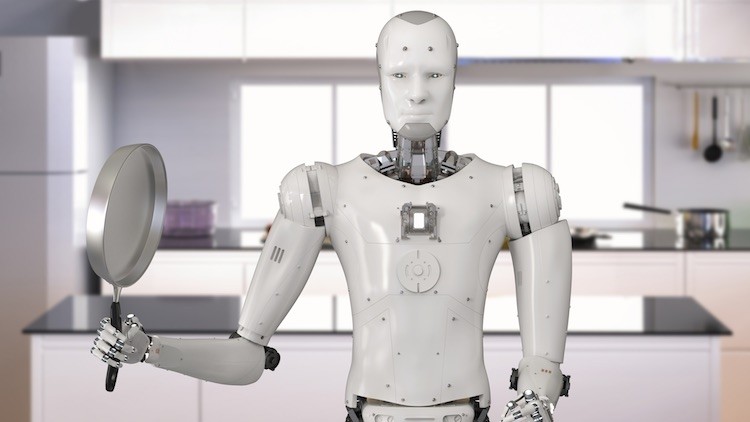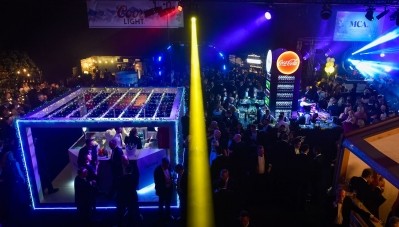Catering equipment: the need for speed

Star Pubs & Bars head of food Mark Teed pinpoints the introduction of the smoking ban in 2007 as a watershed moment for the evolution of the pub kitchen.
“Up until the smoking ban, pubs wouldn’t necessarily have had to provide food, and if they did they’d often be shutting in the afternoon and be offering it between 12noon and 2pm or 7pm until 9pm. But now, for the overwhelming majority, there’s a need for food to keep pubs sustainable and operating, and that involves being open all day.
“Now we see the kitchen as the engine room and something that needs to be future-proofed.”
No matter how much future proofing takes place, however, the fundamentals will always remain the same according to Metcalfe Catering Equipment managing director Neil Richards.
He says: “The basic food preparation requirements of any kitchen are still well served by the tried and tested traditional food prep equipment.
“The market is currently seeing a surge in demand for traditional machines such as slicers, peelers and mixers thanks to the current trend for cooking using fresh ingredients.
“With kitchens returning to the basics of preparing fresh food on-site, it stands to reason that operators need to invest in traditional food prep equipment.”
Crucial aids
This back-to-basics stance is echoed by the winner of the Young Chef of the Year at this year’s Parliamentary Pub Chef of the Year awards, Amy Houghton. “I think you make do with what’s available and you never think about what could be available in the future.”
Amid all the shiny new gadgets invading kitchens up and down the country, Houghton, from the Shoulder of Mutton pub in Hebden Bridge, West Yorkshire, highlights two of the most basic tools of her trade as the items she can’t do without.
“Spoons, for tasting, and my knives. My knives are obviously different to anyone else’s and without them I can’t do my job – I can’t prep my veg, I can’t prep the meat. I can’t do anything.”
Yet, despite the simple staple of her kitchen, Houghton admits that a tech upgrade wouldn’t go amiss, flagging a near £1,000 piece of kit as the dream addition to her kitchen.
“I’d say a Thermomix – because when you’re making purées and soups and stuff like that, you get a much smoother finish. It’d improve the standard of products we’re producing at the moment.”
Mark Osborne chef and business partner at the Railway, Lowdham, Nottinghamshire, gives a ringing endorsement of Houghton’s choice. “The Thermomix is probably the most used piece of equipment we’ve got –we’ve got two of them and they just get absolutely hammered.”
Demand for faster food
The Railway opened in April last year and won best newcomer in the Nottingham Restaurant & Bar Awards.
Star Pubs & Bars’ fixtures and fittings policy helped with the pub’s cash flow enabling Osborne to splash out on kit like the Thermomix.
Osborne cites the increased demand for food to be turned around quickly as a key factor in the types of equipment now finding their way into pub kitchens.
“For me things like the Pacojet – the ice cream machine – are game-changers. I haven’t got one as we’ve only been trading for 10 months but it is on my wish list.
“I’ve used one everywhere else I’ve worked. It’s faster and what it produces is amazing. If you look back at when I first started you had an ice cream machine that would churn it and it’d just take forever.”
“As with the Thermomix, you add your base ingredients and it produces what you want, when you want it. It’s speed but it’s also the quality that is just incredible – you could never produce that with a normal ice cream machine.”
Can you handle the heat?
Legislation dictates that within foodservice, certain operations should be conducted within regulation-set temperature parameters. As such, the ability to gauge temperature over the various ranges of the process
is essential.
Tim Strutt, from Electronic Temperature Intruments, says to cook meat safely – so that food poisoning organisms such as E. coli, Salmonella and Listeria are killed – the centre of the meat must reach a core temperature of at least 70°C for two minutes, something that a calibrated digital thermometer such as a Thermapen will make light work of.
Combi-oven control
Star Pubs & Bars’ Mark Teed’s choice of kitchen gadget also reflects the growing need for speed in pub kitchens. Pub ovens have moved on from gas cooking, to instantaneous induction hobs and faster ways of getting food onto plates. “One of my favourites is the combination oven – it doesn’t take up lots of space in the kitchen, but it’s like a microwave and an oven at once.
“It penetrates food, but if you’re cooking a pie or a lasagne it keeps the pastry crisp or browns the lasagne and all within minutes.
Teed flags up the fact that consumer trends are having a huge impact on the make-up of a pub’s kitchen.
This ranges from the must-have gluten-free menu options dictating that kitchens use dedicated fryers for different food types, to customers’ demands for transparency in the food they’re eating contributing to the rise in open kitchens and chefs’ tables, throwing customers into the trials, tribulations and theatre of a bustling kitchen.
Even the drive for photogenic, Instagrammable food is encouraging pub chefs to use techniques and tools to enhance an ingredient’s vibrant colours.
Teed explains that the need for speed is also consumer driven, rather than a simple matter of convenience.
“It’s been driven by the customer trend of not wanting to wait half an hour to 45 minutes if you’re going for food on the high street,” he explains.
“For example, if a consumer is on a lunch break from work, pubs have had to adapt to compete with high-street players such as Subway to keep themselves in the game.”
This means that new equipment that increases speed of service is paramount.
Teed adds: “The consumer wants food fast so [manufacturers] will be developing and selling fryers that get up to temperature quicker, for example.
“A lot of kitchens now also have hot holding equipment, like Thermodynes. You can cook two or three things at once, put them in a drawer and when an order comes on you just have to take it out the drawer, put it on a plate and go.”
Advanced technology
The introduction of smart bars and increasingly computerised drink operations mirrors similar innovation in pub kitchens.
Teed cites the example of ConnectedCooking, a product he compares to Amazon’s Alexa and Hive’s home utility management gadgets, as evidence of a move towards remotely managed, digital pub kitchens allowing publicans to focus on other tasks while food is cooked to specifications determined by smartphone.
“You still have to put the food in the oven, but you don’t have to be there to mother it – you can steam, cook, roast anything, but you’re free to do other jobs.”
This blows the kitchen door wide open to the tide of technology sweeping across the wider hospitality industry.
“3D printers – are they hitting us soon? Are we going to need chefs? I think that’s where it could go,“ says Teed. “What I have seen from the drinks perspective, there’s a lot more to come, like personalised coffee – you can do a cappuccino and load a picture into a machine which then personalises the chocolate shape on the top – that’s being used by a few hotel companies. That shows you the evolution.”
Metcalfe’s Richards states that the constant demand for food following the introduction of the smoking ban a decade ago is driving the development and purchasing patterns behind pub kitchen equipment.
He says: “Strong, reliable food prep equipment does not come cheap.
“Good-quality food prep equipment will have strong components such as heat-treated gears, powerful motors, high-quality stainless steel blades and built-in safety features.
“If an operator is prepared to invest money in higher quality, strong prep equipment then the whole-life cost of the equipment is going to be much less than buying cheap inferior equipment, because the latter will not last very long in a demanding kitchen.”
Brakes Catering Equipment marketing manager Tina Carter concludes: “Buy well, buy once is a mantra here – so buy the best you can afford.
“Cheap equipment that breaks down all the time is going to cost more in the long term.”






